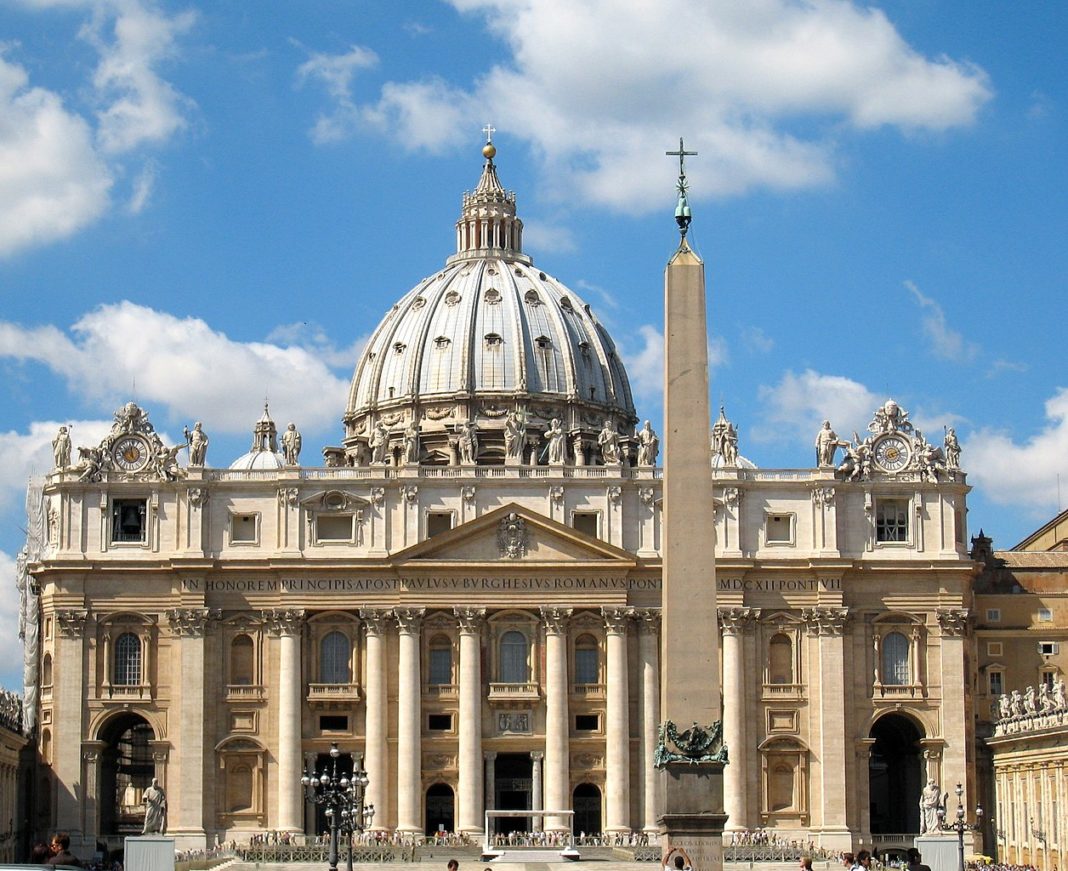It was initially planned by Pope Nicholas V and then Pope Julius II to replace the aging Old St. Peter’s Basilica, which was built in the fourth century by Roman emperor Constantine the Great. Construction of the present basilica began on 18 April 1506 and was completed on 18 November 1626.
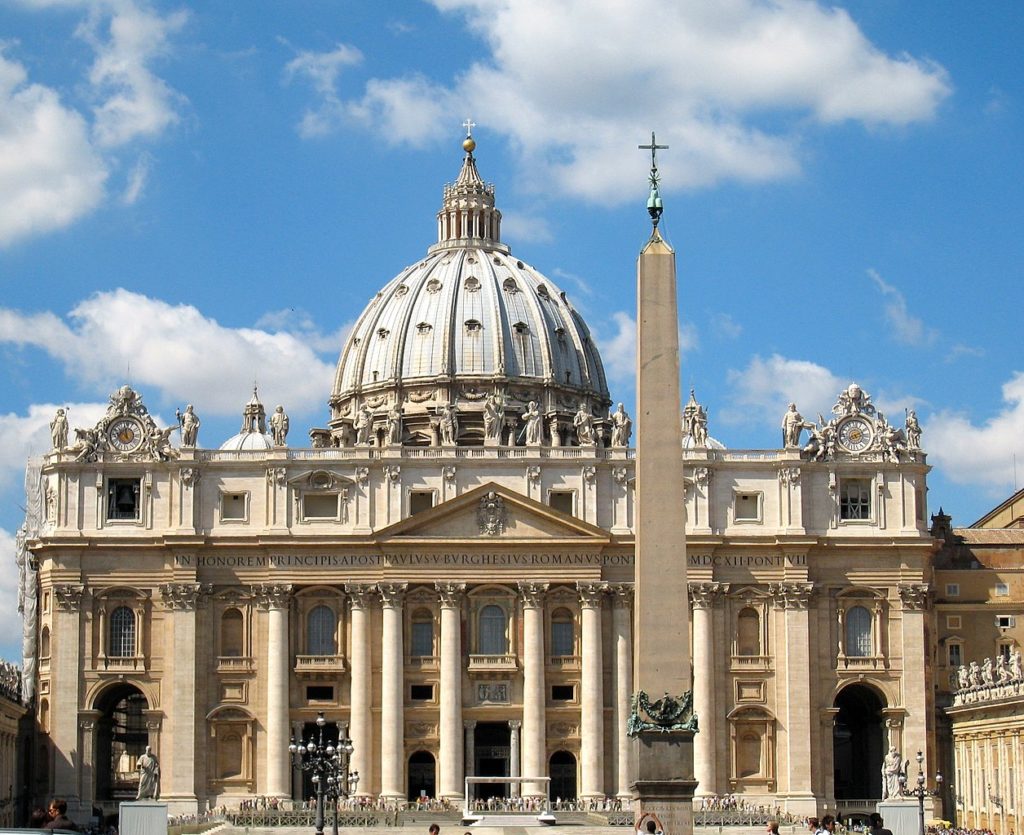
Designed principally by Donato Bramante, Michelangelo, Carlo Maderno and Gian Lorenzo Bernini, St. Peter’s is the most renowned work of Renaissance architecture and the largest church in the world by interior measure. While it is neither the mother church of the Catholic Church nor the cathedral of the Diocese of Rome (these equivalent titles being held by the Archbasilica of Saint John Lateran in Rome), St. Peter’s is regarded as one of the holiest Catholic shrines. It has been described as “holding a unique position in the Christian world” and as “the greatest of all churches of Christendom.”
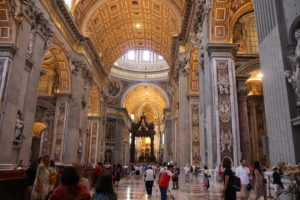
Catholic tradition holds that the basilica is the burial site of Saint Peter, chief among Jesus’s apostles and also the first Bishop of Rome (Pope). Saint Peter’s tomb is supposedly directly below the high altar of the basilica, also known as the Altar of the Confession. For this reason, many popes have been interred at St. Peter’s since the Early Christian period.
Its central dome dominates the skyline of Rome. The basilica is approached via St. Peter’s Square, a forecourt in two sections, both surrounded by tall colonnades. The first space is oval and the second is trapezoidal. The façade of the basilica, with a giant order of columns, stretches across the end of the square and is approached by steps on which stand two 5.55 meters statues of the first-century apostles to Rome, Saints Peter, and Paul.
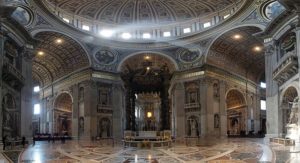
The basilica is cruciform in shape, with an elongated nave in the Latin cross form but the early designs were for a centrally planned structure and this is still in evidence in the architecture. The central space is dominated both externally and internally by one of the largest domes in the world. The entrance is through a narthex, or entrance hall, which stretches across the building. One of the decorated bronze doors leading from the narthex is the Holy Door, which only opened during jubilees.
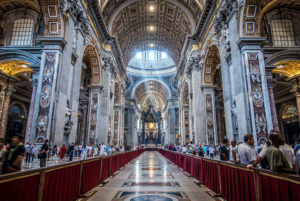
The entire interior of St. Peter’s is lavishly decorated with marble, reliefs, architectural sculpture, and gilding. The basilica contains a large number of tombs of popes and other notable people, many of which are considered outstanding artworks.
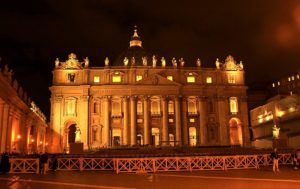
St. Peter’s is famous as a place of pilgrimage and for its liturgical functions. The pope presides at a number of liturgies throughout the year both within the basilica or the adjoining St. Peter’s Square; these liturgies draw audiences numbering from 15,000 to over 80,000 people. St. Peter’s has many historical associations, with the Early Christian Church, the Papacy, the Protestant Reformation and Catholic Counter-reformation and numerous artists, especially Michelangelo. As a work of architecture, it is regarded as the greatest building of its age. St. Peter’s is one of the four churches in the world that hold the rank of Major papal basilica, all four of which are in Rome, and is also one of the Seven Pilgrim Churches of Rome.
According to Wikipedia





